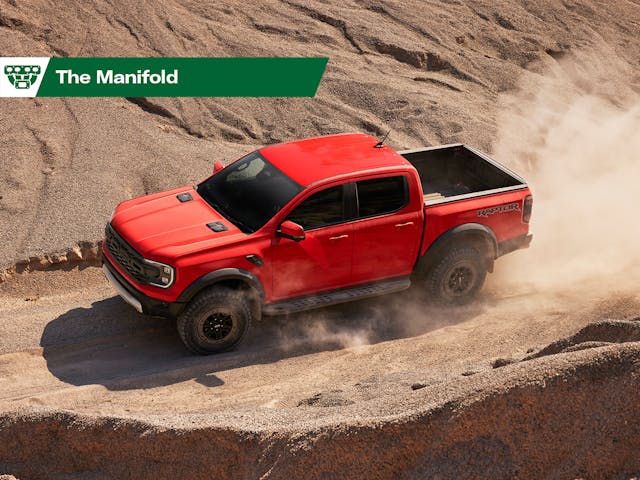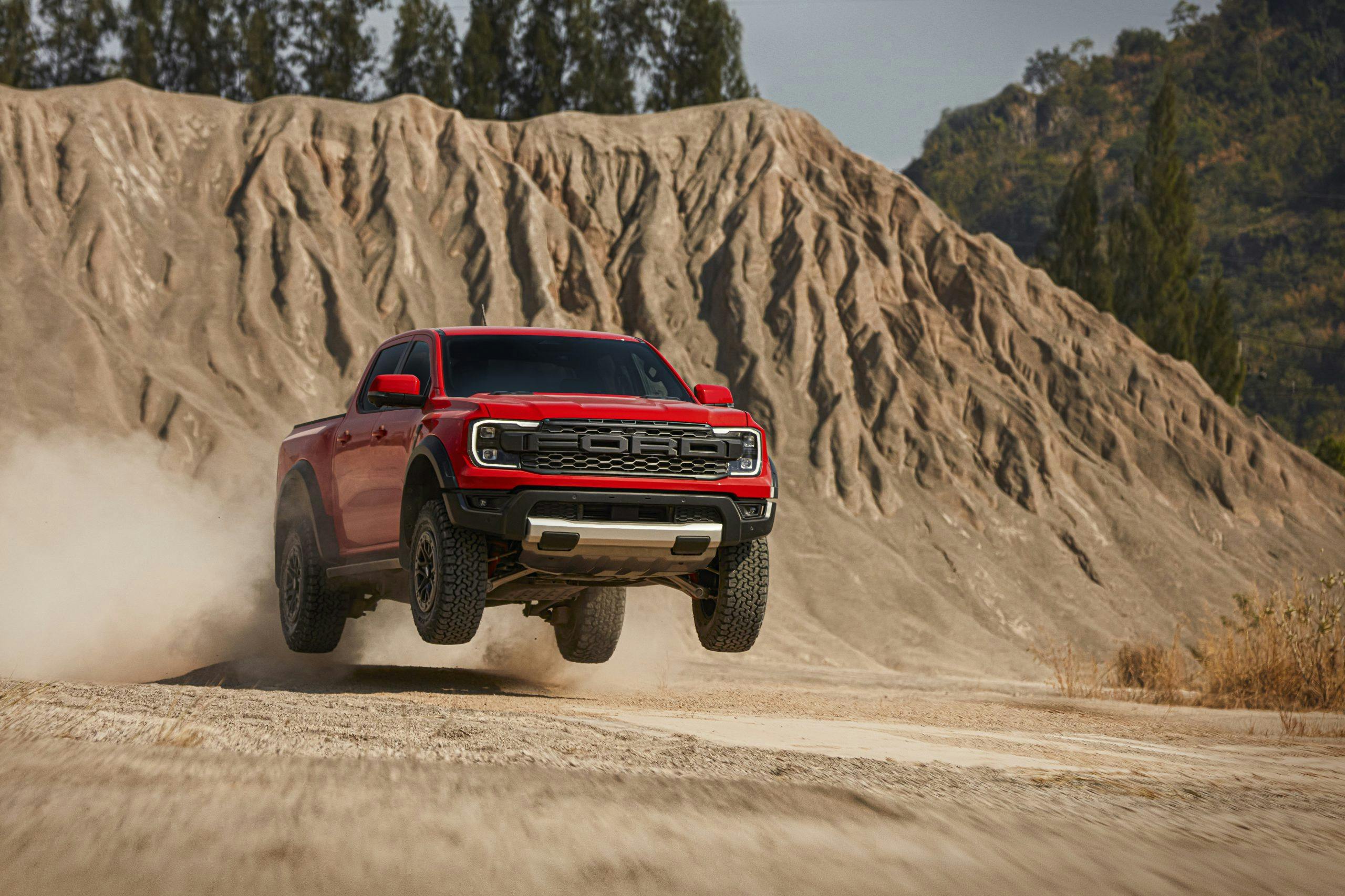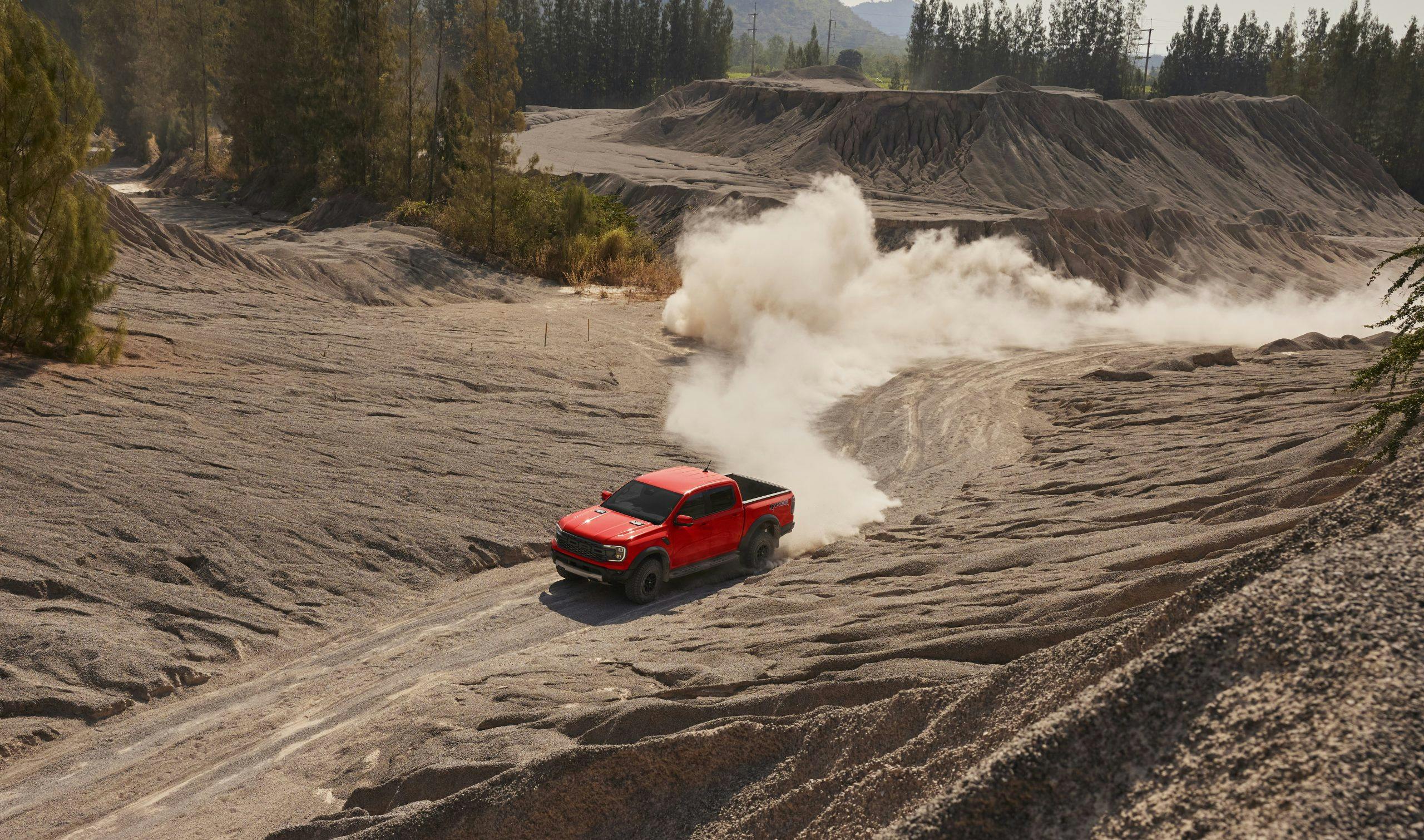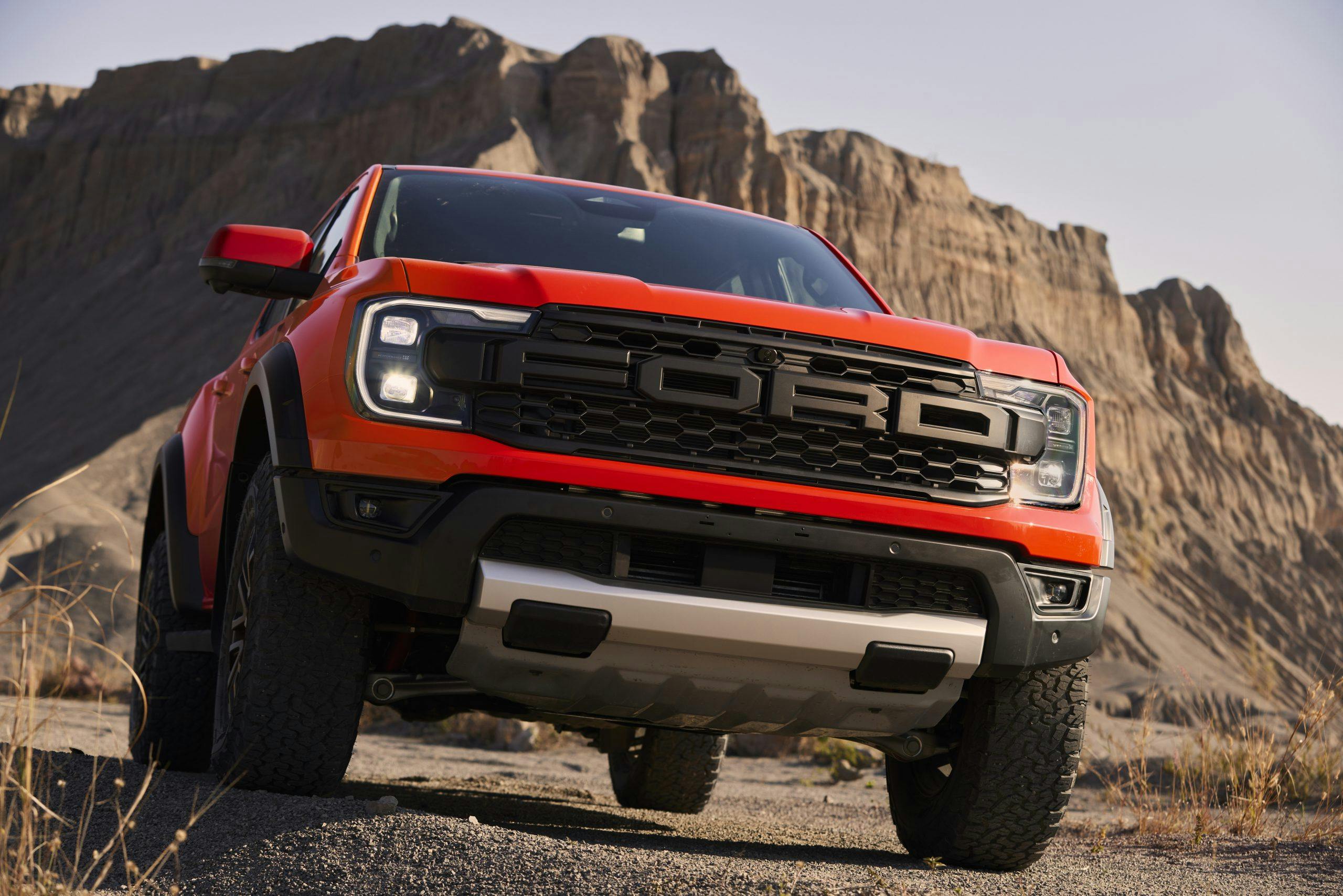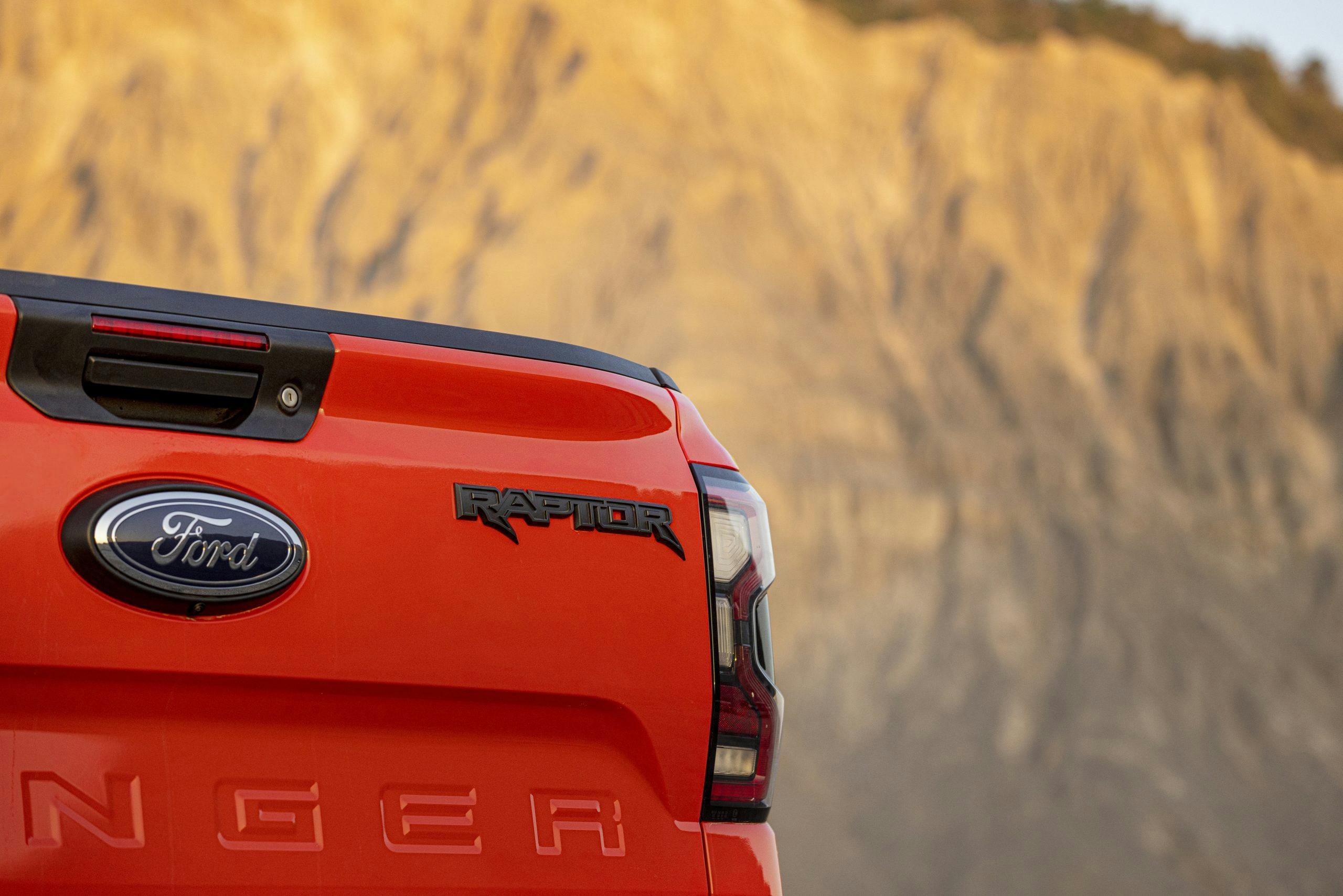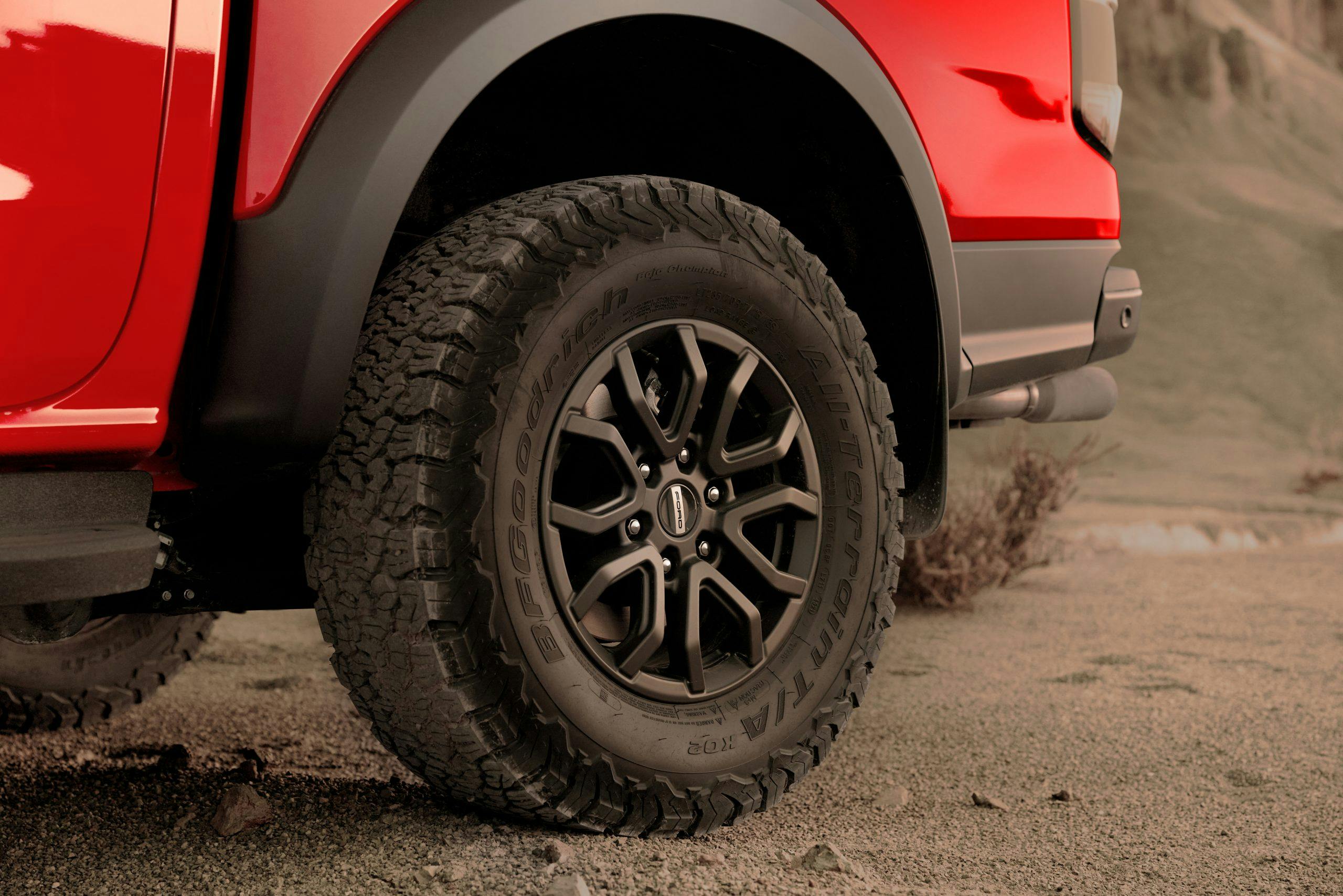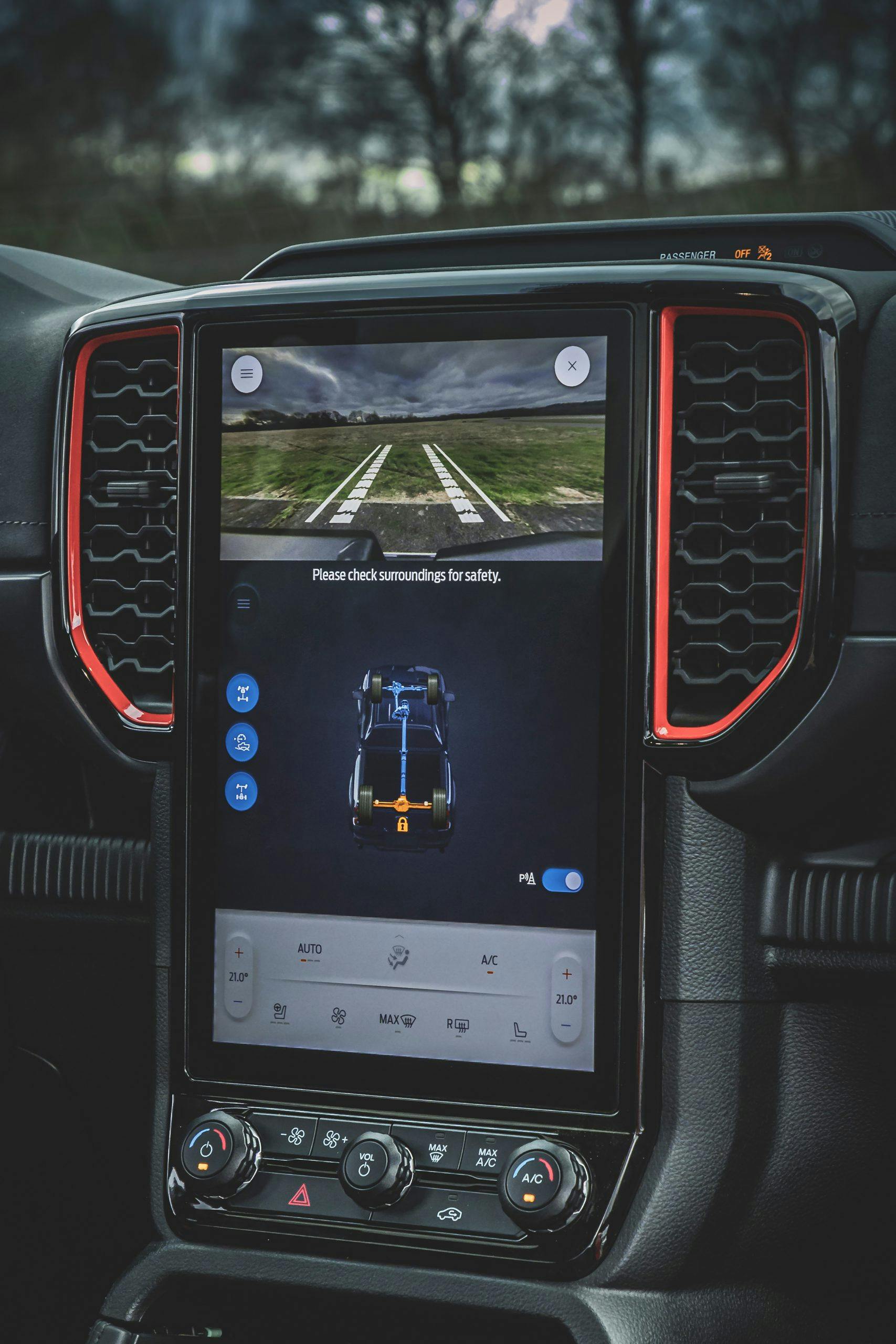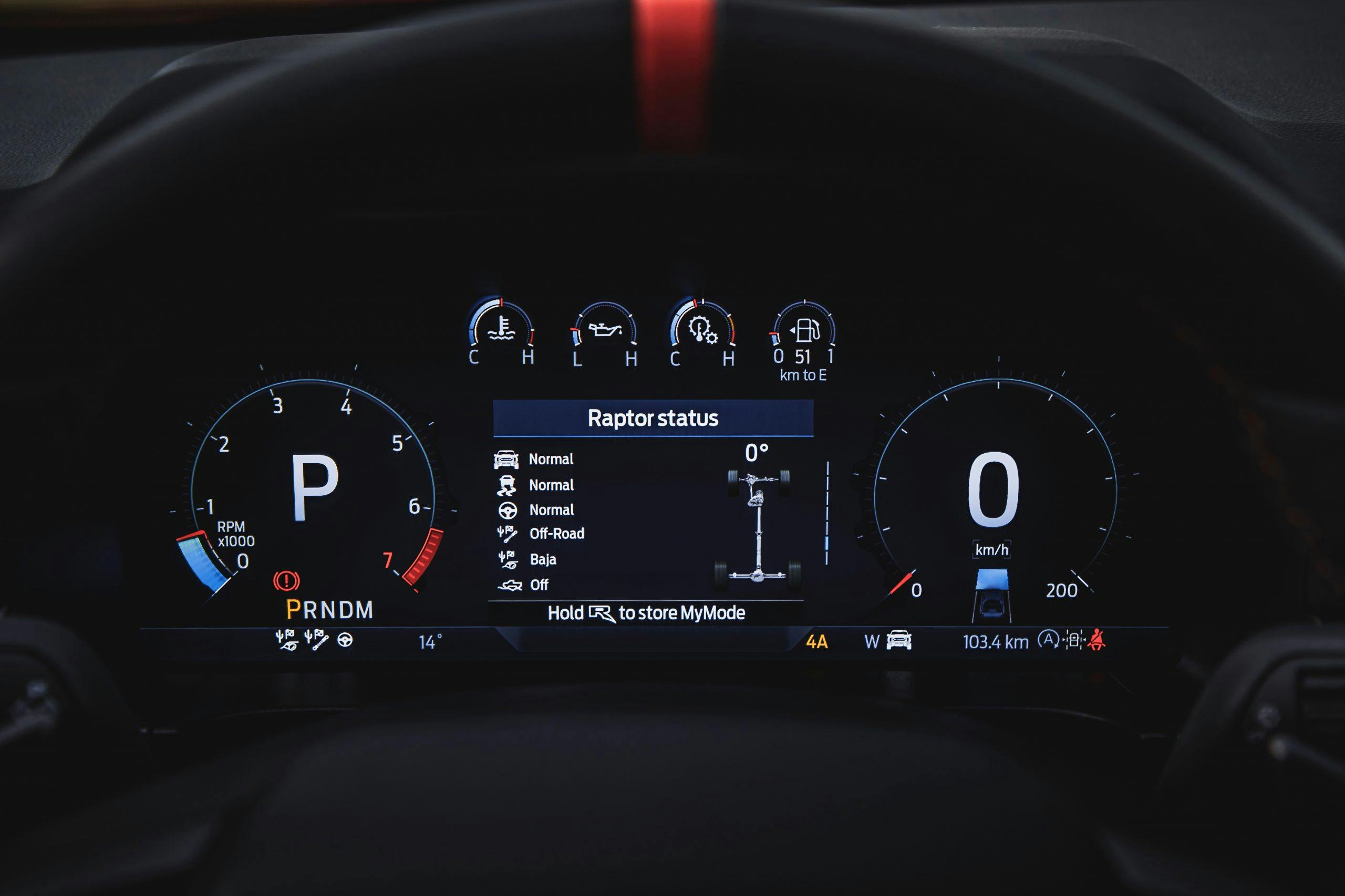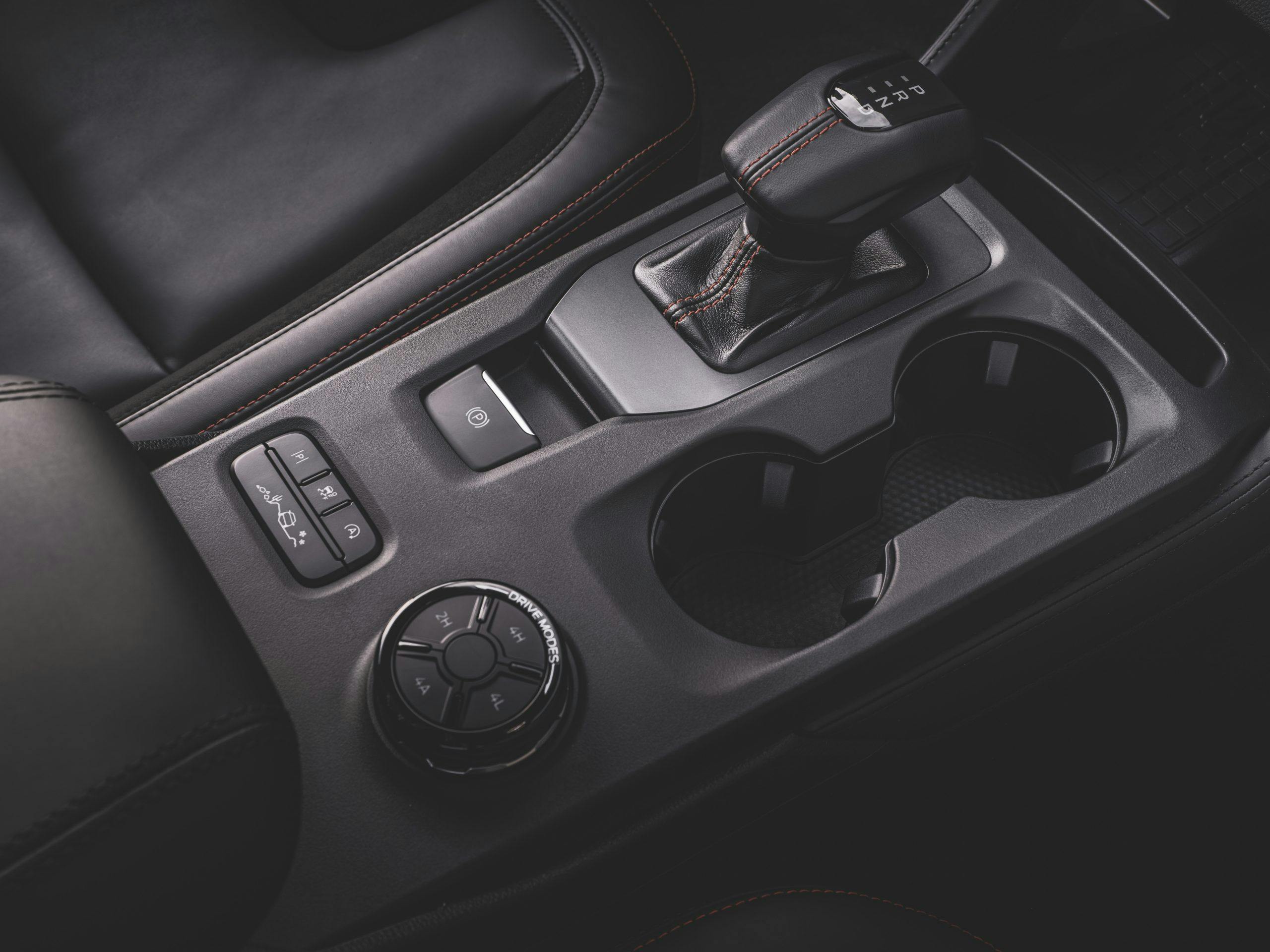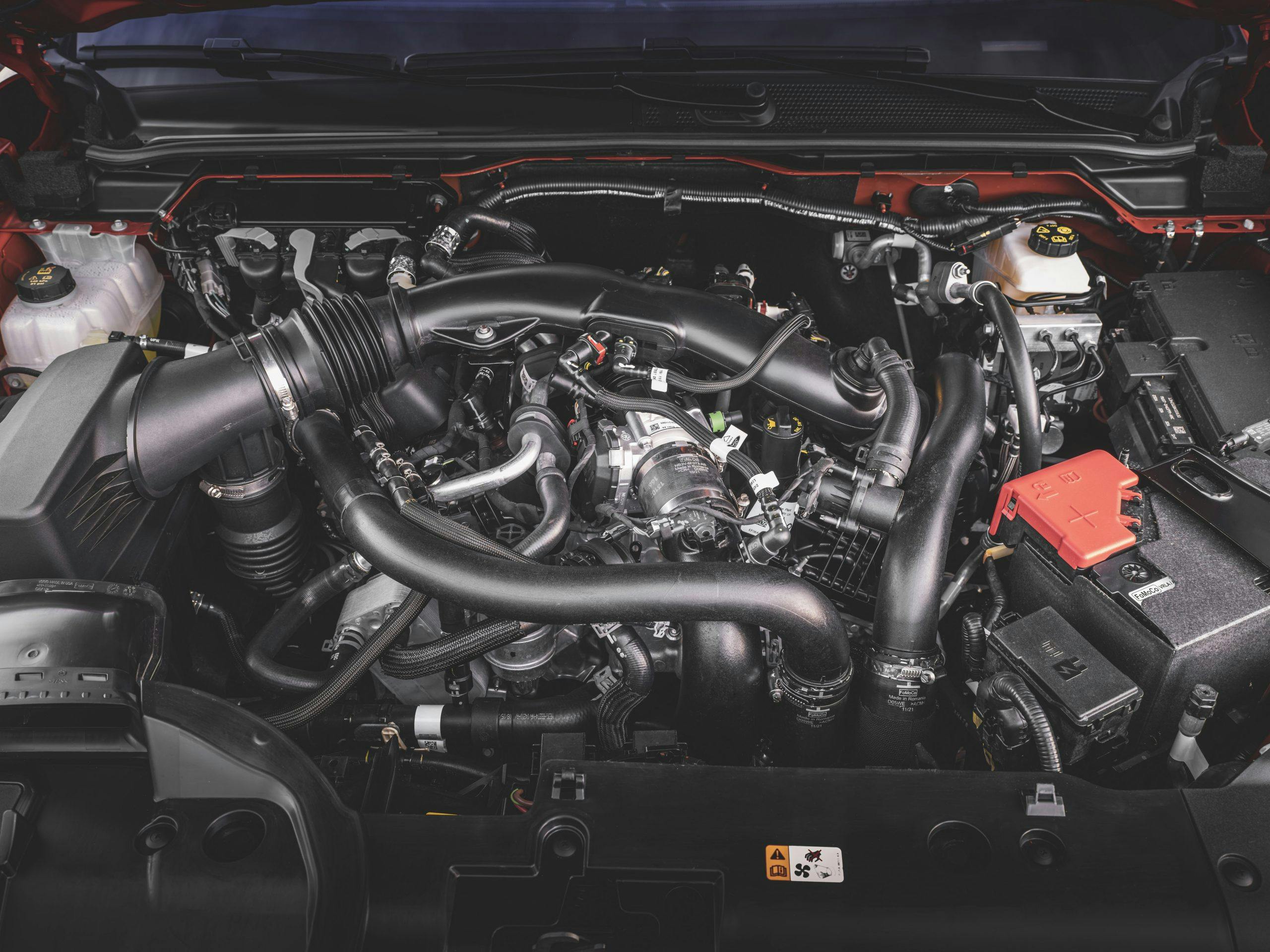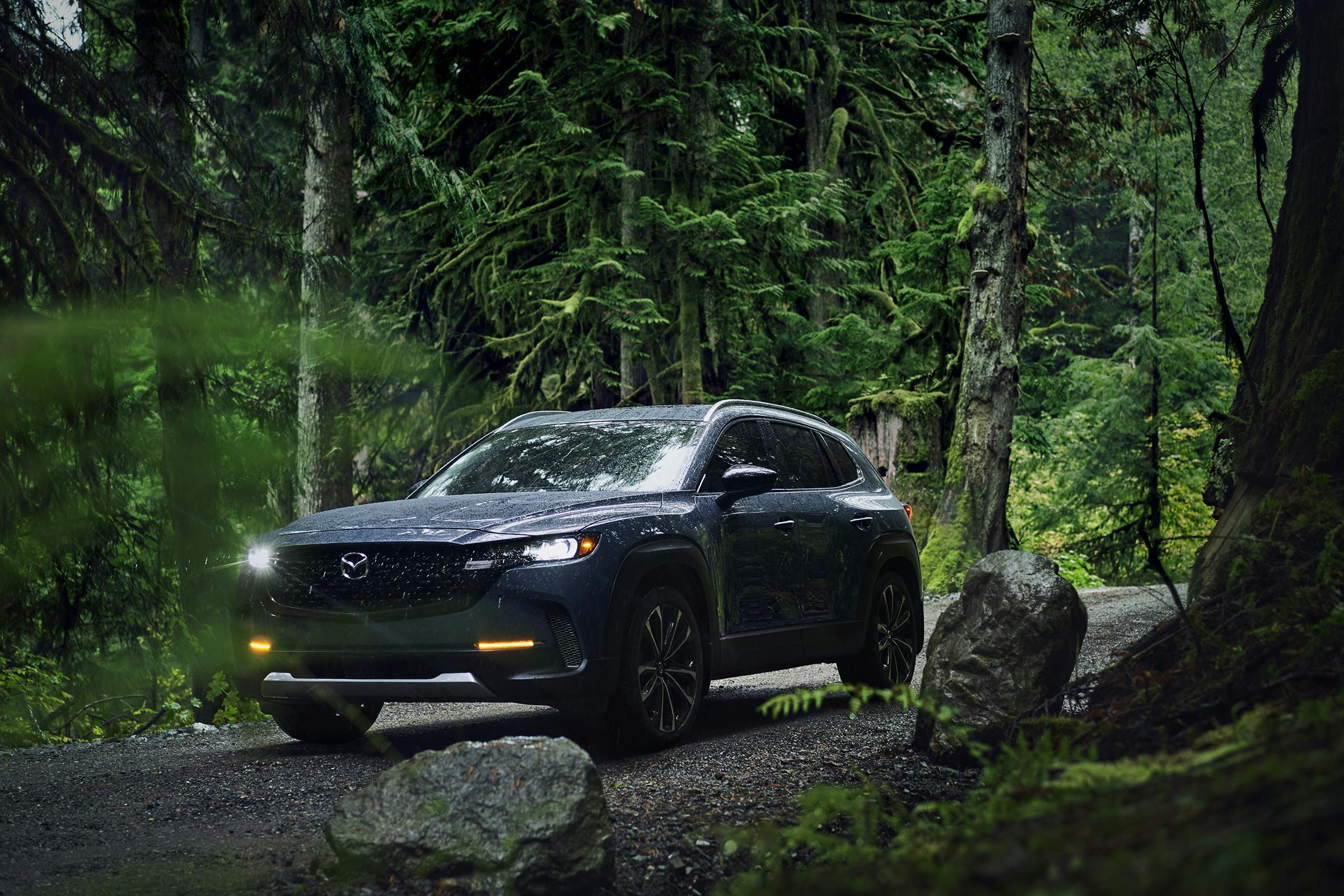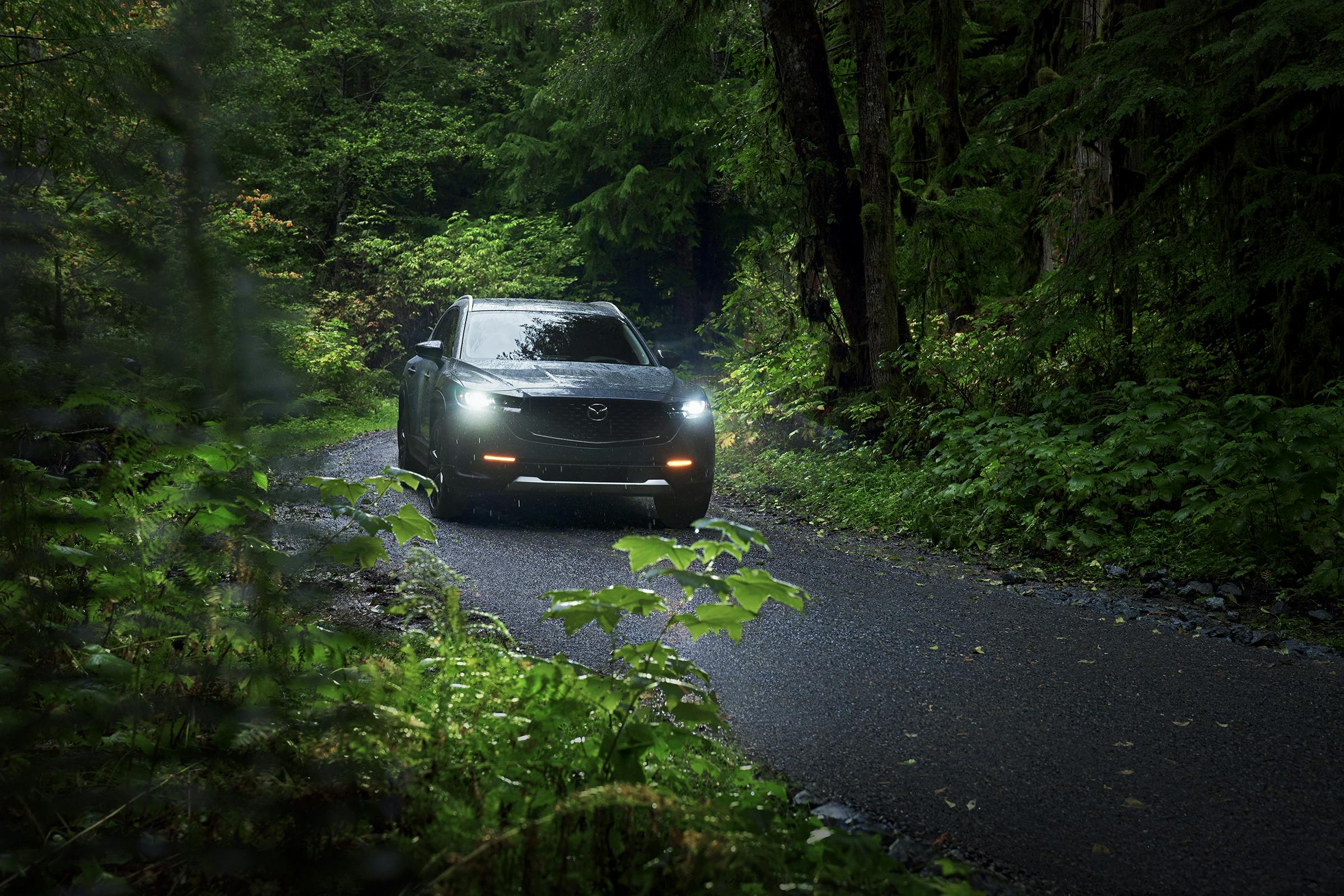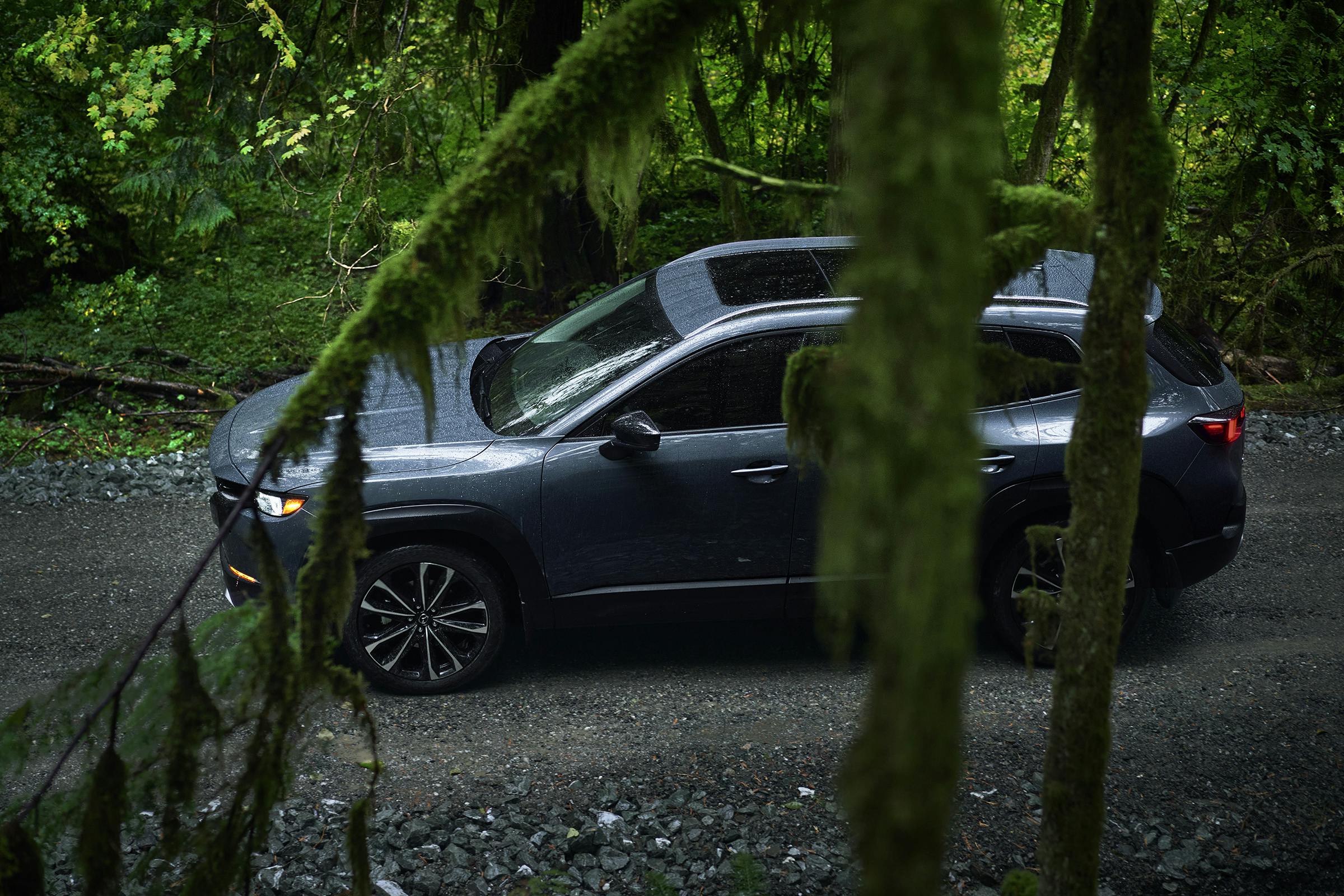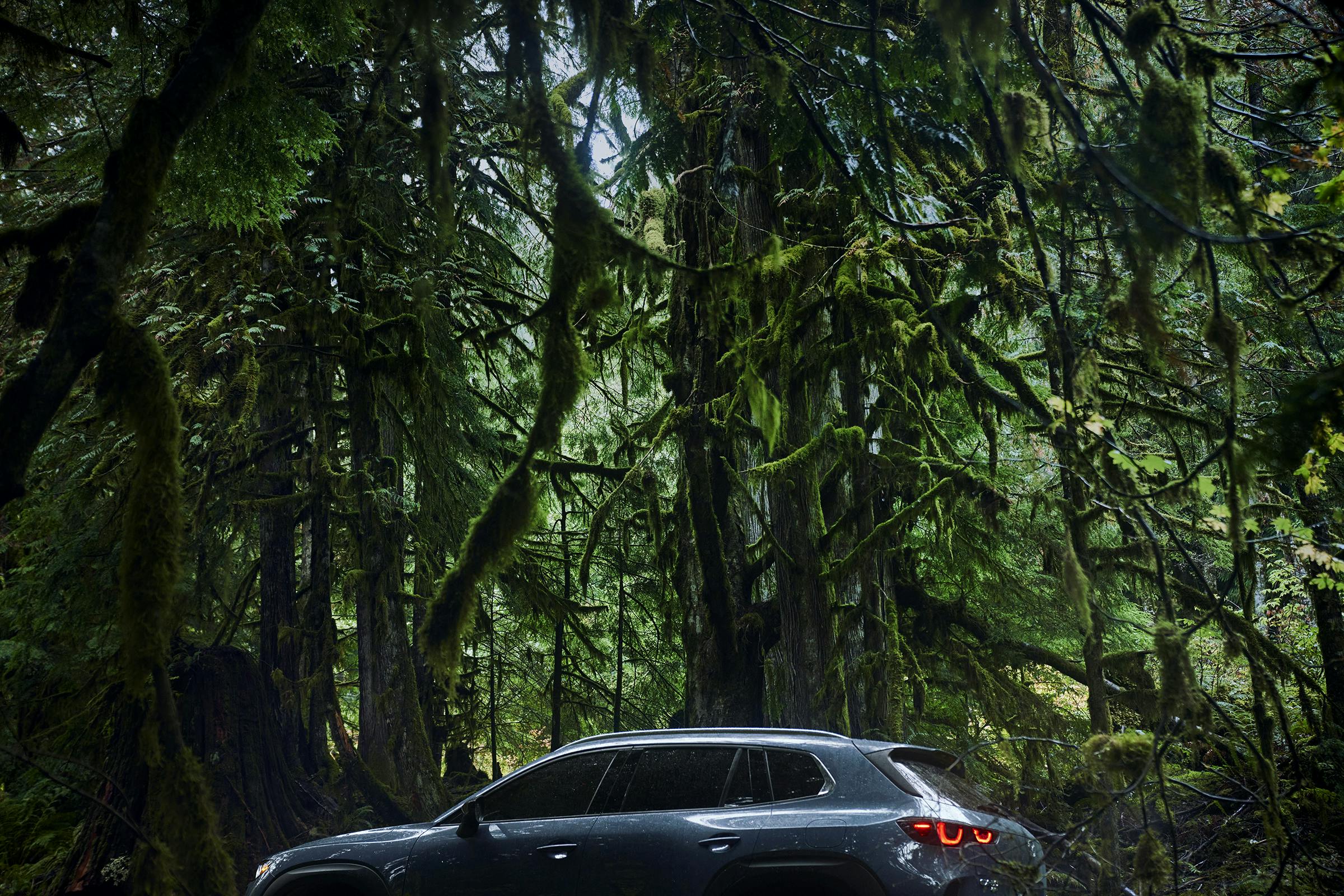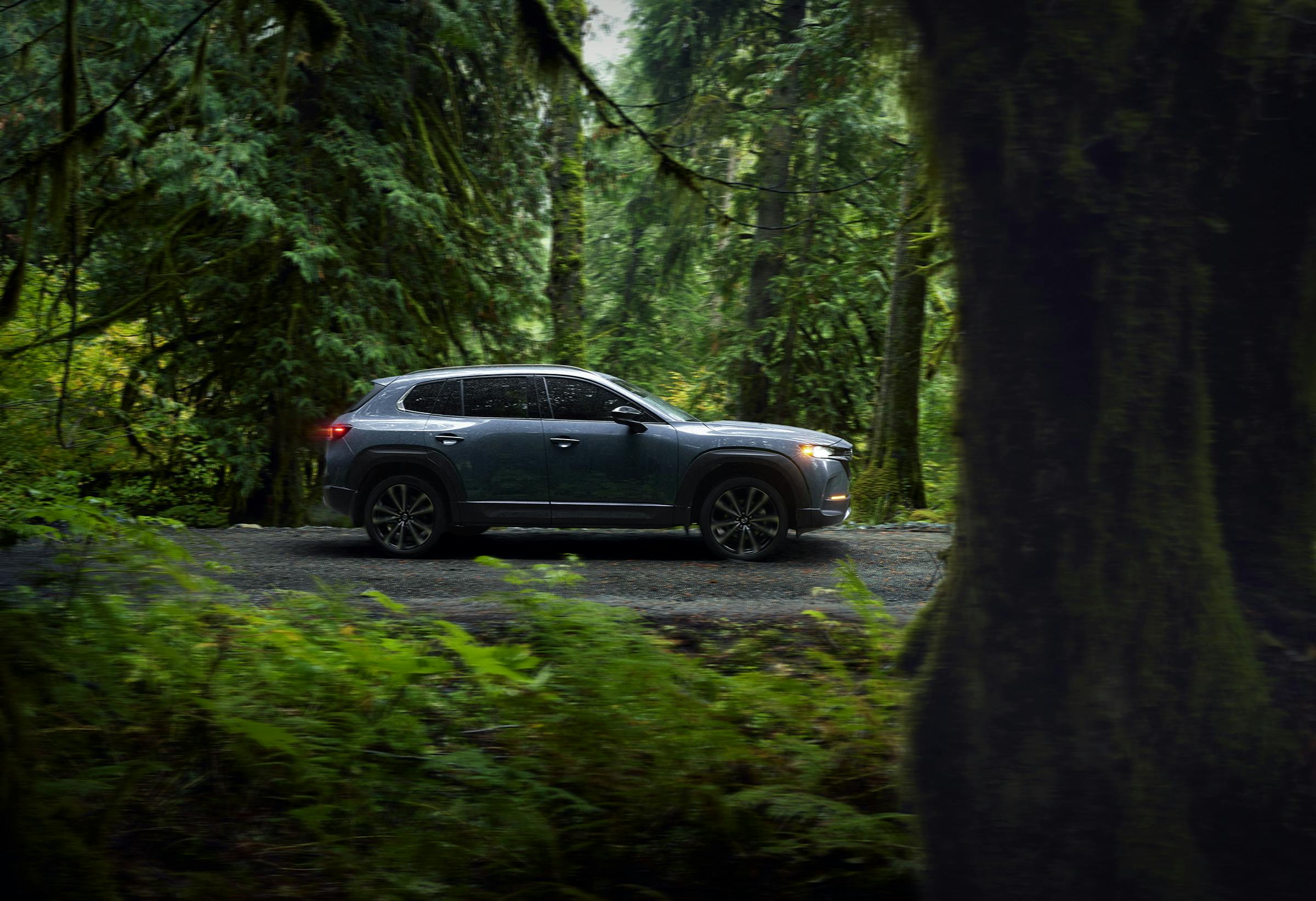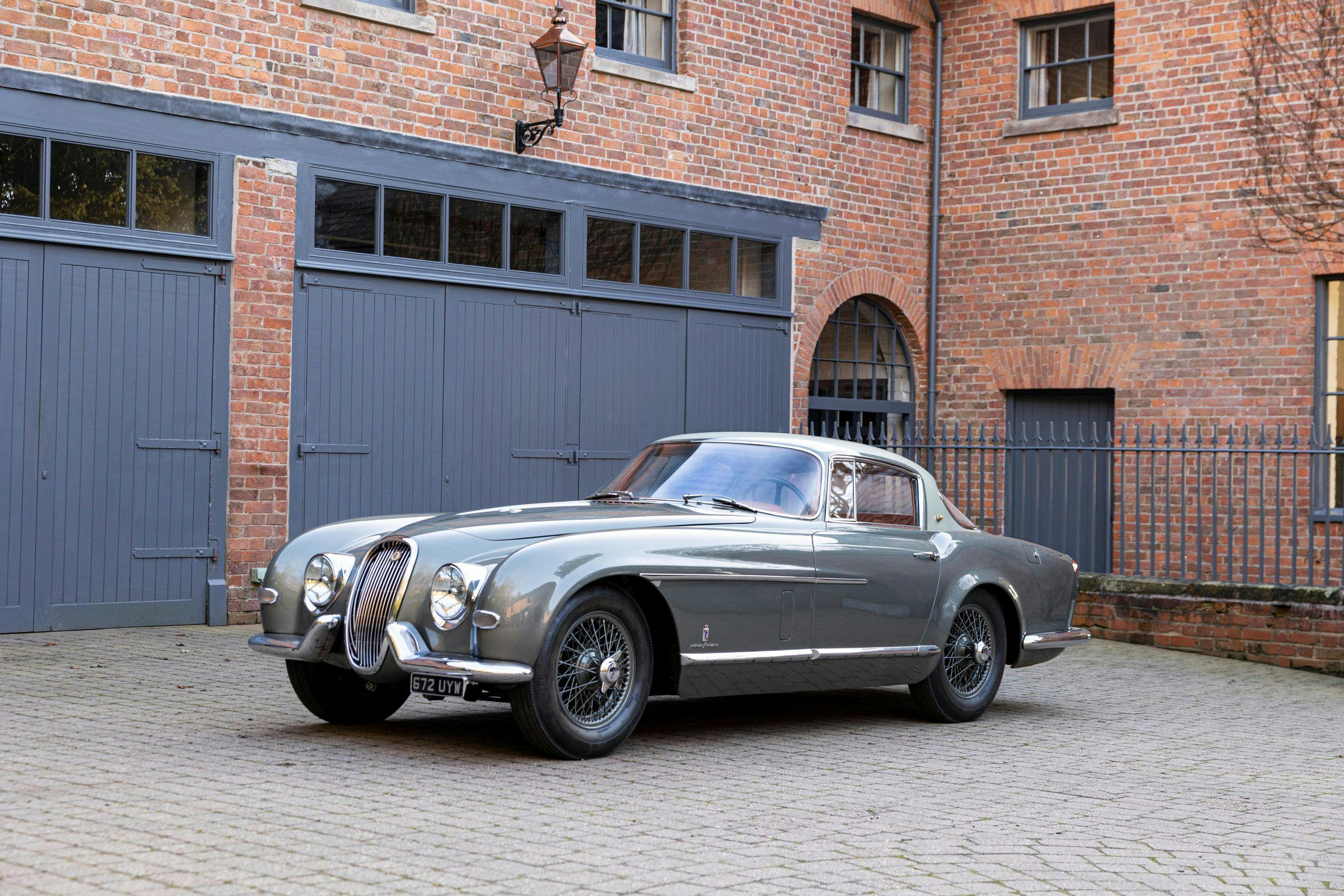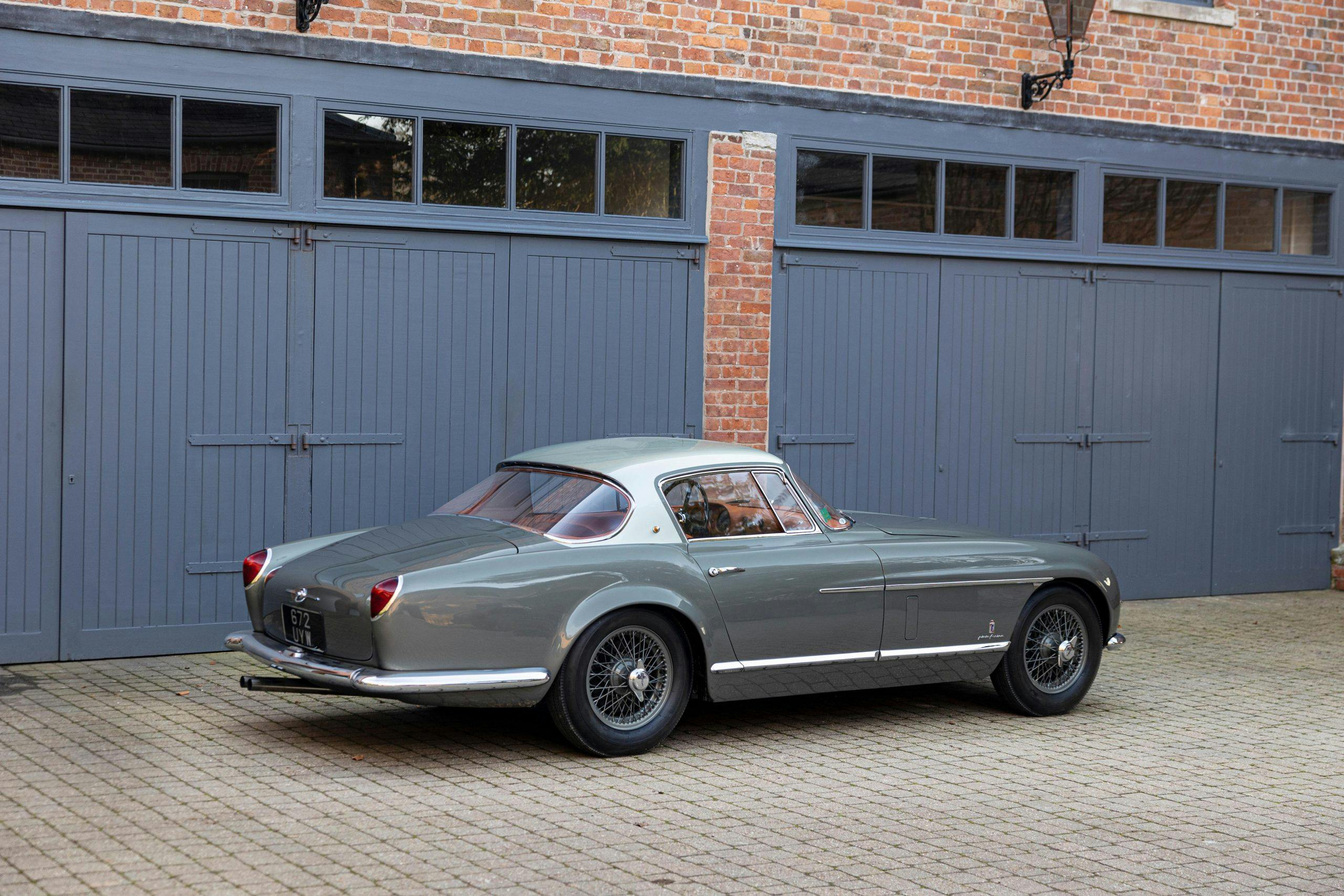2022 Ranger Raptor U.S.-bound, Lotus’ IPO plans, a mysterious Italian-bodied Jaguar
392-hp Ranger Raptor lands in U.S. next year
Intake: 12 years after the full-size F-150 Raptor bared its off-roading talons, Ford is bestowing the coveted off-road-oriented performance and cosmetic package upon its midsize Ranger pickup. Ironically, the birthplace of the Raptor phenomenon won’t get access to this compact, open-bed Raptor model until next year. Soon to be released in Europe, Asia, and Australia, the Ranger Raptor sports a twin-turbo EcoBoost V-6, a reinforced chassis, Fox shocks, electronic front and rear differentials, multiple terrain modes, active exhaust, and 17-inch wheels with optional beadlocks clad in BFGoodrich all-terrains. Exterior upgrades include items like the famous Raptor-style grille, thicker skid plates, and wider fenders with functional vents. Upgraded seats, unique orange interior trim and a 12.4-inch infotainment screen are some of the changes headed internationally, and odds are that all these goodies will make it to the U.S.-spec Ranger Raptor in 2023.
Exhaust: It was only a matter of time before the off-road engineering and design goodies bestowed upon the Bronco made it to sistership Ranger. (The Raptorized Bronco, unveiled last month, is due this summer.) For those who always wanted a Raptor model with a bed but needed something smaller than an F-150, the Ranger Raptor promises to be Ford Performance’s perfect package.
BMW uses foam, fleece to shush the electric 7-Series

Intake: At BMW’s research and innovation center in Munich, Germany, engineers working on the upcoming, battery-powered i7 sedan are going to extremes to keep the cabin ultra-quiet. Details such as foam inside the tires (not new, but still impressive), flush underbody structure to smooth airflow and the accompanying noise, special motor mounts, window glazing, fleece linings in the doors, plus high-tech materials for the door seals, and body pillars all help achieve maximum cabin zen. Additionally, through electronic countermeasures, BMW says the i7 will absorb outside noises—from wind, snow, or construction sites and passing vehicles—and counter their sonic frequencies, ensuring they don’t reach the occupants. Engineers also been testing out the new model’s resistances to electromagnetic spikes, which can hinder the reliability of all of the electronically controlled hardware in these new machines—in this era, that’s everything from suspension to navigation.
Exhaust: BMW is clearly determined to make the i7 a whisper-quiet contender in the burgeoning world of high-dollar BEV saloons—think Lucid Air, Mercedes EQS, and Tesla Model S. It’s wild to think about all the noises and outside interferences from which we expect a luxury ride to insulate us. On the flip side, that last bit about zapping the i7 with electromagnetic fields sounds like BMW is trying to protect you from a Matrix-style attack. These days? Who knows, maybe that’s smart.
Lotus is planning to go public with a stock market float

Intake: Lotus is looking to float its Technology division on the stock market, valuing the business between £5 and £6 billion ($7B–$8B). The stock market launch is expected to come within the next two years, but whether Lotus shares will sell in the Asia, London, or New York markets has yet to be decided. Lotus Technology is majority-owned by China’s Geely and has bold plans to sell 100,00 cars a year by 2028. Some 90 percent of those models will be electric SUVs and sedans produced in a new plant in Wuhan, China, with the remainder being sports cars made in the U.K by Lotus Cars, which is 49 per cent owned by Malaysian firm Etika Automotive and not part of the planned IPO.
Exhaust: The ambition is admirable. Geely has already invested more than $2 billion in upgrading Lotus’ home in Hethel and added a new technical hub in Frankfurt, Germany, while spending a further $1.2 billion on the new Wuhan factory. If successful, the transformation from small but storied sports car maker to a global player would be seriously impressive.
Mazda’s newest five-seat SUV is priced like an Outback
Intake: Maybe you’re a fan of the CX-5, but wish it had a more adventurous personality. Perhaps you’re eying the venerable Subaru Outback—but you hesitate at its clunky styling. Another option has entered the ring: Mazda’s CX-50. Despite the “5,” this five-seater is based on the Mazda3 platform and debuted this past November with standard all-wheel-drive and burly plastic bits. Mazda has now released pricing, and, while it can climb above $40K, the SUV starts at $28,025 (designation included). Standard equipment includes: wireless CarPlay, LED headlights lights, and the 2.5-liter turbo four that, in the CX-5, makes 250 hp. Mazda offers no fewer than five trims (which thankfully stack on each other) based on this 2.5 S base model, ranging from the $1400 Select to the $9600 Premium Plus. We’d opt for the $7600 Premium package, which adds a moonroof, a 12-speaker Bose stereo, and the pretty terracotta interior.
Need more power? Jump to the turbocharged powertrain for $36,400 and get a 3500 (rather than 2000) pound tow rating plus a dedicated Towing mode (added to the standard Sport and Off-road). The only bad news: That cool model with the roof rails and matte hood appliqués—the first CX-50 Mazda showed us—will be pricey. We don’t know exact numbers, but the “Meridian Edition” will be based on the Turbo model. We’re guessing just under $40K … Outback Wilderness money.
Exhaust: This isn’t a replacement for the CX-5: Mazda’s giving its largest single market more of the vehicle class it loves most. The CX-50 is the first of three new SUVs bound for the U.S. It will be followed by the two-row CX-70 and the three-row CX-90, both of which will be based on a longitudinal architecture and offer both inline-six and plug-in hybrid powertrains.
The world’s only Pinin Farina Jaguar is up for grabs
Intake: A 1954 Jaguar XK120 SE Coupe with unique bodywork by Pinin Farina is to go under the hammer at Bonhams’s Amelia Island Auction on March 3. The car’s origins remain a bit of a mystery, however. It left the Jaguar factory with pastel blue paint and a French grey soft top, being shipped to New York dealer Max Hoffman, and a year later it was on display at the Turin Motor Show having been completely rebodied by the Italian artisans. According to a contemporary report in The Autocar, the work was done for “an American enthusiast,” whom Bonham’s believes was Hoffman himself. We don’t know to whom Hoffman sold the car, but it was spotted in Canada and Massachusetts over the next few years. In 1972 it was discovered, abandoned, in a field in Connecticut and given a renovation before being sold to a collector in Germany. It was bought by its current owner Peter Neumark in 2015 and was subject to an incredible 6275-hour, nut and bolt restoration, winning the International Historic Restoration of the Year Award in 2017. Unsurprisingly, the car is estimated to sell for between $900,000 and $1.3 million.
Exhaust: This Anglo-Italian special looks set to become the most expensive XK in history. According to the Hagerty Price Guide, a #1 (Concours) condition XK120 SE drophead coupe would be worth $173,000, which is a mere fraction of the auction estimate.
